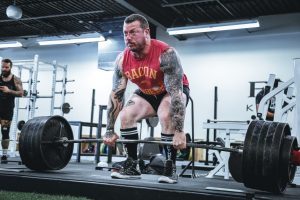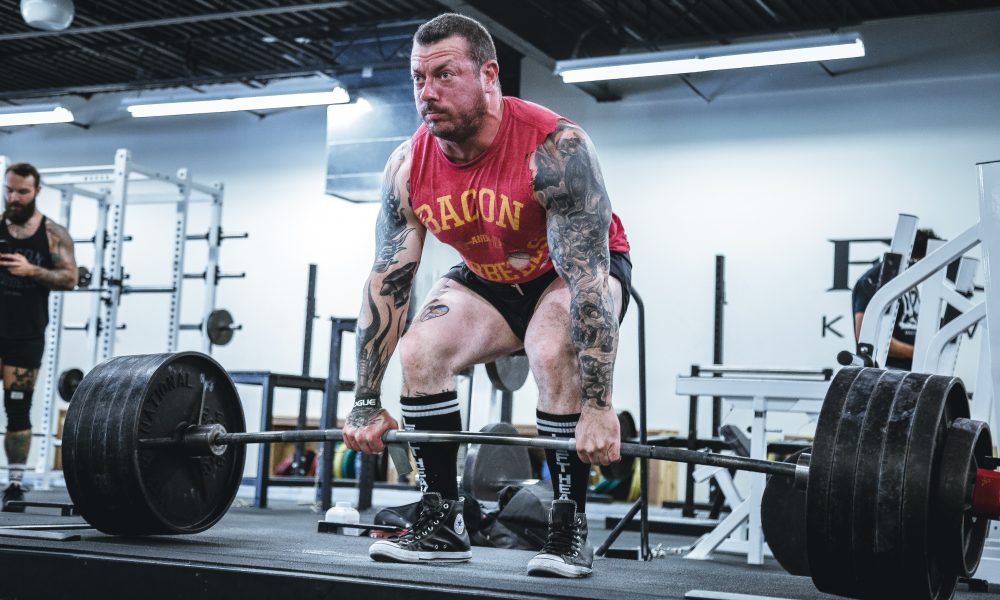
Compound vs Isolation Exercises – Comparing the Nuances
There’s many misconceptions between compound and isolation exercises. Many people think isolation exercises are pointless, redundant, and unnecessary.

There are many misconceptions between compound and isolation exercises. Many people think isolation exercises are pointless, redundant, and unnecessary. These people are also the close-minded dorks who decline added parmesan cheese because they think their pasta already has enough. Such blasphemous behavior…
Anyways, let’s get down to the truth between compound and isolation exercises.
To ensure we’re on the same page, here’s a brief breakdown of definitions.
Ok now that we agree on basic definitions, let’s compare their differences.
We know strength is specific meaning the more you practice a particular movement, the stronger you’ll get at that specific movement. Doing compound exercises will obviously get you stronger at compound exercises and the same goes with isolation.
However, research does show us, compound exercises have a better transfer effect meaning the strength built from compound exercises carry over to more movements (1).
For example, leg presses build more than leg extension and glute kick back strength, but leg extensions and glute kickbacks didn’t build as much leg press strength (19).
So building more strength in a variety of tasks favors doing compound lifts.
On a set per set basis, compound exercises burn more calories because they generally work more muscles and are more difficult (2). That being said, trying to lose weight by exercising off tons of calories is a futile effort. You’ll get a much more pronounced effect through restricting calories from your diet.
Still, it can’t hurt to focus more on compound lifts during a fat loss phase.
Because compound lifts are more demanding, they require more cardiovascular demand than isolation lifts (2). But again, that’s neither here nor there because doing actual cardio will produce a significantly more pronounced effect in this department.
On a set per set basis, each compound exercise set will involve more muscle groups thus resulting in more total muscle mass built (2). To be clear, this doesn’t mean a row builds bigger biceps than a curl, but the row will likely build more accumulated muscle when considering the combined back, lats, and rear delt gains it also produces.
In other words, compound exercises are a bigger bang for your buck.
However, in the 2 volume matched studies we have that compared the targeted muscle size between compound and isolation found results were either similar or favored the isolation exercise depending on the exercise compared (3,4).
This shows us that while compound exercises will build more total muscle, the muscle you’re mainly targeting might be better grown with an isolation exercise. So in the realm of targeted hypertrophy, isolation is either comparable or in some cases superior.
Most benefits I covered so far favor compound exercises, but just like all good things in life, it comes at a cost. Compound exercises create much more fatigue due to more muscles being involved, higher cardiovascular demand, and increased muscle damage (5,6,20).
Isolation exercises are less fatiguing while being able to recover quicker even when training to failure (7).
When comparing compound only training to compound training with additional isolation volume, hypertrophy favors adding in some isolation volume.
From all the qualified studies, they tend to show a statistically significant benefit and even when they don’t, the effect sizes almost always largely favors doing compound paired with isolation indicating the studies were simply underpowered (8,9,10,11,12,13).
You’ll hear many squat addicts claim all you need for huge quads is squats, but the squat just like many other compound exercises doesn’t maximize muscle growth of all muscles within a muscle group.
One of the 4 quad muscles, the rectus femoris doesn’t grow well from squats (14). You know what does train the rectus femoris optimally? Leg extensions, an isolation exercise (15).
But the differences aren’t just within muscle groups, but within the actual muscle itself.
Within any given muscle itself, isolation exercises have been shown to cause different regional hypertrophy meaning more muscle growth at specific regions (16,17).
In line with this, you’ll need both a press and a triceps isolation to maximize triceps growth (18).
So while compound exercises are more comprehensive, they still have holes that can’t be completely filled by just squatting or benching more. If you want maximum hypertrophy, you have to include some isolation exercises to cover all your bases.
Compound exercises will always give you more bang for your buck. If you’re limited on time, or train with very low volumes, sticking only to compound exercises is a great idea.
However, this doesn’t mean isolation exercises are bad or pointless.
If you’re someone who wants to maximize hypertrophy and performance, including isolation exercises is optimal. They shouldn’t dominate your program, but there should be a good amount especially for body parts you’re emphasizing.
So remember kids, isolation exercises don’t completely suck, but even if science said otherwise, were you really going to ditch doing biceps curls forever? Probably not.
Brandão L;de Salles Painelli V;Lasevicius T;Silva-Batista C;Brendon H;Schoenfeld BJ;Aihara AY;Cardoso FN;de Almeida Peres B;Teixeira EL; “Varying the Order of Combinations of Single- And Multi-Joint Exercises Differentially Affects Resistance Training Adaptations.” Journal of Strength and Conditioning Research, U.S. National Library of Medicine, pubmed.ncbi.nlm.nih.gov/32149887/.
Stien, Nicolay, et al. “Training Specificity Performing Single-Joint vs. Multi-Joint Resistance Exercises among Physically Active Females: A Randomized Controlled Trial.” PloS One, Public Library of Science, 29 May 2020, www.ncbi.nlm.nih.gov/pmc/articles/PMC7259582/.
de Camargo JBB;Braz TV;Batista DR;Germano MD;Brigatto FA;Lopes CR; “Dissociated Time Course of Indirect Markers of Muscle Damage Recovery Between Single-Joint and Multi-Joint Exercises in Resistance-Trained Men.” Journal of Strength and Conditioning Research, U.S. National Library of Medicine, pubmed.ncbi.nlm.nih.gov/33394892/.
Grab my free Stupid Simple Scroll to Mastering Hypertrophy

There’s many misconceptions between compound and isolation exercises. Many people think isolation exercises are pointless, redundant, and unnecessary.

We all want epically high testosterone levels coursing through our veins like Thor shooting lighting bolts from the sky. Unfortunately, many men struggle with their testosterone, sometimes unknowingly.

Sleep is fascinating. We love it, yet so many of us are sleep deprived zombies. In fact, it’s become some sort of badge of honor brag about how little sleep you get.